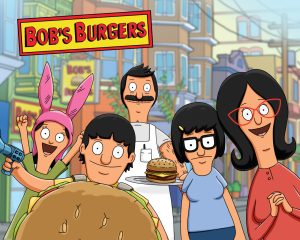While fans of the popular American show, Bob’s Burgers may be highly knowledgeable of characters, narratives, and long-running jokes, there is lesser known knowledge about where the show is actually animated. South Korea is an answer that may surprise many, which begs the question: how many American shows or networks outsource their material to be animated abroad, and what might be some possible effects?
For one thing, it should be known that the largest driving force for creating material overseas is lower cost of production. Outsourcing was popularized in the 1970s when ABC, CBS, and NBC couldn’t meet demand for new episodes of popular shows such as Scooby-Doo and Fat Albert. Korean artists then proved to be technically proficient and quick, and became the new source for many projects (Mayes). Decreased costs are due to the fact that employees in places such as Soul do not have as many protected creative and working rights, therefore allowing for physical and financial exploitation. This poses an ethical dilemma about sacrificing fair working conditions for the sake of larger profit.
A large problem which Korean studios have also faced in recent years is a hesitance to turn from paper animation to digital. This is an issue posed in The Atlantic’s article, “A New Age of Animation” by Kate Torgovnick May which describes that the outsourcing has led to a technical divide which has decreased efficiency. Working on paper means that every frame must be scanned individually for delivery to American studios resulting in any revisions taking a week or more. Another problem is difficulty translating American cultural nuances for culturally different, Korean creators. Joel Kuwahara, co-founder of BentoBox Entertainment, a production company in Los Angeles that produced Bob’s Burgers, notes that, “It can be hard to communicate precisely what we want…It can be acting nuances- or dance moves…We have a different perception of humor… We have a different approach to everything, including body language and expressions” (May).
Another issue that may come about is foreign countries’ lack of understanding about U.S. laws that protect intellectual properties, copyrights, etc (Mayes). This may result in copyright infringements or use of creative property which is not accessible for free use. A large problem that I am personally concerned with is the decreased value of production with foreign animators creating projects of lesser quality due to lack of resources, time, and labor.
The Korean animation industry today works with around 120 studios, including Fox, Dreamworks, Cartoon Network, and Nickelodeon (Mayes). This means that American audiences have a direct relationship to Korean animators, by consuming their work and acting as the main source of profit. American viewers should be aware and critical of the conditions under which their favorite shows were created. This is not to say that shows or networks should be blacklisted as unethical and never supported again, but rather to say that in order to consume media honestly, we must be socially aware of the entire production process. There should be an appreciation for the time, money, and effort put into creating these shows and people should be rewarded and credited in full for the work that was put in.
While push for change and proactivity to apply these changes is slow, some have started to make the transition. The largest solution for the technical, cultural problems is to employ “overseas animation directors” to work in the Korean studios overseas and check any animation that is sent back to the U.S (Mayes). This allows for an American perspective to play an active role in the animation process. Others, such as Kuwahara have taken on a more active role. He has reached out to Toon Boom, creators of the software Harmony in order to improve functionality for Korean animators and encourage studios to make the change from paper to digital, which will open the doors for many young animators in Korea who are pulled to the digital aspect.
Overall, it appears that outsourcing American shows is something which poses some conflict. On the one hand, Korean studios offer extra, quick labor, with the added benefit of decreased cost, while on the other hand this is a direct result of manual exploitation. At the same time, foreign studios face language and cultural barriers which can further prolong the process. Ultimately, it’s a tricky situation which many would rather ignore, but I propose that perhaps until working rights of foreign animators are fully protected, we had better keep animation production domestic.
https://www.linkedin.com/pulse/why-outsourcing-animation-overseas-bad-idea-christina-mayes/
https://www.theatlantic.com/entertainment/archive/2016/05/a-new-age-of-animation/483342/

